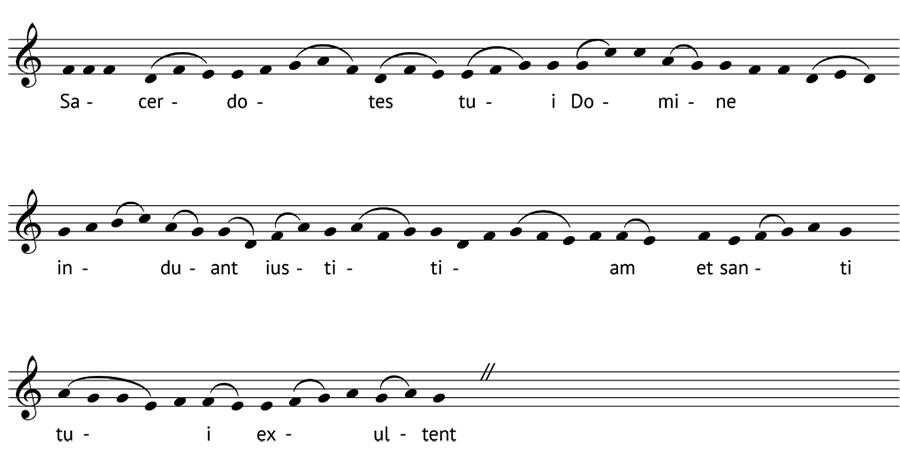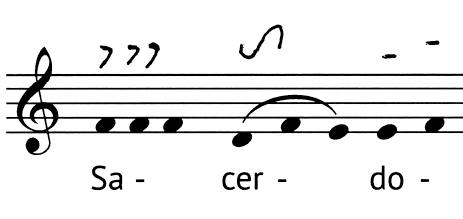'FROM SOUND TO INK' – EARLY FORMS OF MUSICAL NOTATION
2.8
Copying the copyist: Preparation
‘Copying the copyist’ of the neume notation is a very good exercise if you want to understand how neumes work. By comparing neumes with our modern notation, one gets a good idea of what aspects of a melody are included in each form of notation.
In this step, we first ask you to copy the neumes of the introitus Sacerdotes tui, taken from a manuscript from the monastery of St. Gall (Switzerland), Stiftsbibliothek, Cod. 376, p. 105 (image 1), on top of a later transmission of the melody (image 2). In fact, this melody, notated in stemless modern notation, is the one that is still used today in the Latin Mass of the Catholic Church.
The introitus starts in the centre of the page with the orange initial ‘S’, and our excerpt ends with the word exultent which is in the middle of the second line of the piece.

Image 1: Detail of a manuscript from the year 980 containing the mass introitus Sacerdotes tui.
© St. Gallen, Stiftsbibliothek, Cod. 376, p. 105
www.e-codices.unifr.ch
Click to see the whole page of the manuscript

Image 2: Later transcript.
You may want to download or print this template to make your notes with pen and paper.
To copy the neumes correctly, you might have to take a look at the Table of St Gall neumes. In this table, you can find the neumes of St. Gall used in our manuscript and the melody movement they indicate. When copying, it might be helpful to tie the notes contained in one neume sign together with a legato marking, as the main difficulty may be to find the note groups corresponding to single neume signs. You can find an example of the beginning of the melody below.
Important: Please note that there are some combined and ornamental neume signs in the manuscript that are not contained in our neume table:

The sign on the left represents a two-tone neume whereas the sign in the middle stands for four tones. The third sign is an ornamental neume represented by two notes in our transcription.
The beginning of the melody looks like this if you copy the neumes correctly:

Finding this difficult? Well, we are glad to help – at least with the first task. You may find a correct transcription here.
Téléchargements
